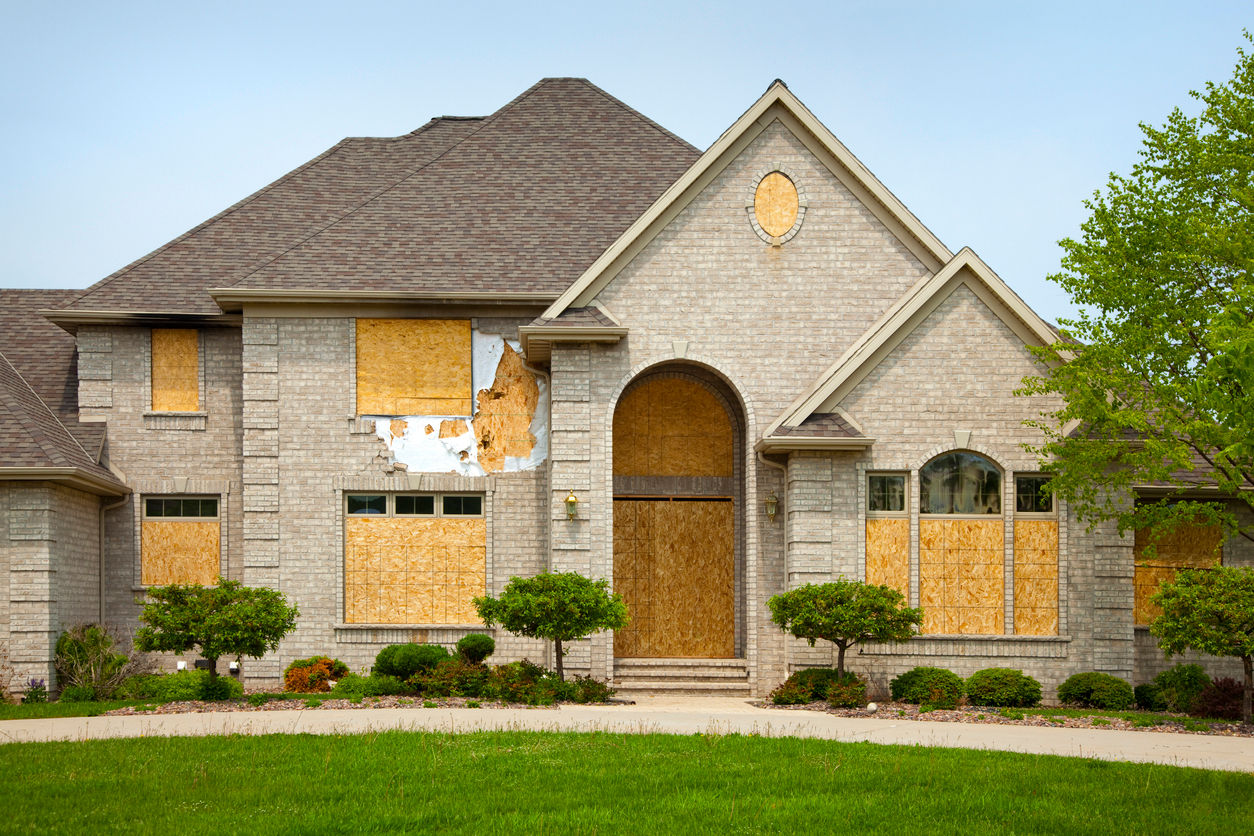- How Does a HELOC Work for Buying a Second Home?
- Pros and Cons of Using a HELOC for a Second Home
- Key Considerations Before Using a HELOC for a Second Home
- Alternatives to Using a HELOC for a Second Home
- Is a HELOC the Right Choice for Buying a Second Home?
- Your Equity, Your Decision: Use It Wisely With Expert Guidance
Can You Use a HELOC to Buy a Second Home?
When financing a second home, you usually need a larger deposit and the income to support the debt payments. You also need to find the right financing, because many loans are only available for your primary residence. Most people consider turning to the equity of their current home. But can you use a HELOC to buy a second home?
A HELOC lets you borrow against your home’s equity using a revolving line of credit—similar to how a credit card works. It’s flexible, and you only pay interest on what you use. That makes it an appealing choice for some buyers who want to purchase a second home.
But using a HELOC isn’t without risk. You’re borrowing against your primary home, which means missed payments could put it at risk. Before proceeding, you must also understand the requirements and repayment terms.
In this article, we’ll look at how a HELOC works for buying a second home, the pros and cons, key factors to consider, and what other financing options are available.
How Does a HELOC Work for Buying a Second Home?
A home equity line of credit (HELOC) gives you access to funds based on the equity you’ve built in your current home. So, if you have $500,000 of equity, you can access a portion of that credit. The loan works as a revolving line of credit, meaning you can borrow what you need, pay it back, and borrow again—up to a set limit.
This differs from a home equity loan, which gives you a one-time lump sum. With a HELOC, you only pay interest on the amount you use, making it more flexible.
Most HELOCs have two phases:
- Phase 1: Draw Period
Typically lasts 5 to 10 years. During this time, you can borrow money and often make interest-only payments. - Phase 2: Repayment Period
Usually 10 to 20 years. You can’t borrow anymore, and you’ll start repaying both principal and interest.
It’s important to note that HELOCs usually come with variable interest rates, which means your monthly payment could increase over time because they are subject to an interest rate that changes with the Secured Overnight Financing Rate (SOFR).
Lenders also limit how much you can borrow, usually 75% to 85% of your home’s appraised value, minus what you still owe on your first mortgage. You’ll need a solid credit score, a manageable debt-to-income ratio, and enough equity in your home to qualify.
Using a HELOC to buy a second home can offer flexibility, but you should fully understand the terms and risks involved before committing.
Pros and Cons of Using a HELOC for a Second Home
If you want to tap into your existing home equity to buy a second home, using a HELOC can be a smart option. However, it’s not the right fit for everyone and does come with some risks.
Before you move forward, weigh the potential advantages and disadvantages to make a more informed decision and avoid financial surprises.
Pros of Using a Home Equity Line of Credit
A HELOC can help you get a second home using accumulated home equity. They can offer some advantages—especially for homeowners who have built up a lot of equity and want to avoid taking out a full mortgage or refinancing.
Here are some benefits of using HELOC-
- Lower interest rates than other forms of credit
HELOCs often offer lower interest rates than unsecured options like personal loans or credit cards and can also be lower than loans on second homes because they are attached to your primary residence. Lower rates on home equity loans make them cost-effective for covering a large expense like a second home purchase or down payment. If you’re comparing financing options, a HELOC can significantly reduce the amount you pay in interest over time—especially in a low-rate environment. - Access to funds as needed
One of the biggest advantages of a HELOC is flexibility. Unlike a home equity loan, which gives you a lump sum upfront, a HELOC allows you to draw only what you need when needed. This is ideal if you’re shopping around and want the capital available so you can act quickly but don’t want to commit to a large loan just yet. A home equity loan can also be beneficial when buying a fixer-upper, and renovation costs can be expected to come in stages. - Interest-only payments during the draw period
Most HELOCs offer interest-only payments during the initial draw period (usually 5–10 years). This can help lower your monthly costs early on, giving you more breathing room as you take on the financial responsibility of a second property. It’s beneficial if you plan to rent out the second home or sell another asset soon to cover the balance later. - Potential tax deductions
In some cases, HELOC interest may be tax-deductible—if the funds are used to buy, build, or substantially improve a qualified property. If your second home meets IRS criteria as a residence or rental, you may be eligible for these deductions. Always consult with a tax professional to understand what applies to your situation, but it’s worth exploring the possible tax benefits when comparing this to other financing options. - No need to refinance your primary mortgage
A HELOC lets you tap into your home’s equity without touching your existing mortgage. If you already have a low fixed-rate mortgage on your primary home, you can leave it intact while still accessing capital. This can be a smarter financial move compared to a cash-out refinance, which could reset your loan terms or increase your rate.
Cons of Using a Home Equity Line of Credit
While a HELOC can offer flexible financing, it also comes with some serious risks—especially when you’re using it to purchase a second home. Before you get this equity credit line, consider how these potential drawbacks might impact your overall financial picture.
- Variable interest rates can increase your monthly payments.
Unlike a fixed-rate loan, most HELOCs come with variable interest rates tied to the prime rate. That means your monthly payments could rise if interest rates go up. If you’re already stretching your budget to afford a second home, unpredictable payment increases could quickly become a financial burden. This risk is especially important to consider in a rising-rate environment. - You’re putting your primary residence on the line.
A HELOC is secured by your main home, so if you default on the loan, you could lose the place where you live. While it might feel like you’re using equity as “free money,” it’s still debt with real consequences. If your income drops or unexpected expenses arise, juggling two properties and a second mortgage could become overwhelming. - Home values don’t always go up.
Tapping into home equity assumes your property will hold or increase its value. But real estate markets can shift. If home prices fall and you’ve maxed out your HELOC, you might owe more than your home is worth. This could make it harder to refinance, sell, or access additional financing. - Repayment can be more expensive than expected.
Once the draw period ends, you’ll repay principal and interest. If you’ve borrowed a large amount or relied on the interest-only period to keep payments low, the transition to full repayment can lead to a steep increase in your monthly obligations. Planning for this shift is crucial. - Not everyone will qualify—and terms vary widely.
HELOCs aren’t one-size-fits-all. Lenders typically require a credit score of 680 or higher, a low debt-to-income ratio, and at least 15%–20% equity in your home. Even if you meet those requirements, terms can vary significantly between lenders, and you might not get access to the amount you need. Shopping around is important, but so is making sure the loan structure fits your long-term financial goals.
Key Considerations Before Using a HELOC for a Second Home
Before you use a HELOC to buy a second home, take time to evaluate your financial position, loan terms, and risk tolerance. While the flexibility of a HELOC is appealing, you need a clear understanding of how it works—and how it could impact your long-term goals.
How Much Equity Do You Have?
To qualify for a HELOC, you need significant equity in your primary home. Most lenders allow you to borrow up to 75%–85% of your home’s value minus what you still owe on your mortgage. If your equity is low, you may not qualify or get a credit line large enough to cover your second home needs.
It’s also worth considering whether using that equity now could limit your options later, especially if you plan to renovate, sell, or refinance your home.
Understand the Loan Structure
HELOCs have two phases: the draw period and the repayment period. During the draw period (typically 5 to 10 years), you can borrow as needed and may only make interest payments. Once the repayment period begins, you’ll start paying back both principal and interest—usually over 10 to 20 years.
While the repayment terms and period might seem distant in the future, homeowners need to budget for the additional mortgage payments. Make sure you understand how your monthly payment could change over time, especially once the interest-only period ends.
Consider the Impact of Market Conditions and Interest Rate Changes
Because most HELOCs have variable interest rates, your payments could increase if rates rise. That can be manageable when you’re borrowing a small amount—but if you’re using a HELOC to fund a down payment or purchase price on a second home, even a small rate increase can significantly affect your monthly costs.
Before committing, run the numbers under different rate scenarios to understand how your payments might fluctuate.
Lender Requirements Can Vary
Most lenders require a credit score of at least 680, a low debt-to-income ratio, and a strong financial profile. Some may also limit how the funds can be used, especially if you plan to buy an investment property.
If you want to use the funds for the down payment on a vacation home, you will need to disclose that to your investors. It’s important to compare offers, not just on interest rates but also on terms, fees, and flexibility. Working with a mortgage broker or financial advisor can help you find the best fit for your situation.
Know Your Risk Tolerance
Using a HELOC means leveraging your primary residence to invest in another property. While this can be a powerful tool, it also adds financial risk with increased mortgage payments. If your income changes or the housing market dips, managing two properties with two sets of payments can get complicated fast.
Ask yourself if you could continue to make payments if your second home sits vacant for a few months with no vacation rental income. What would happen if your primary home lost value? Can you continue making payments if you lose your primary income? Being honest about your comfort level with risk can help you avoid financial strain later.
Alternatives to Using a HELOC for a Second Home
A HELOC can be a flexible financing tool, but it’s not the only option available. Depending on your financial situation and long-term goals, you may find that another loan type offers more stability or better terms.
Here are a few common alternatives to consider before borrowing against your home equity.
Home Equity Loan
A home equity loan is similar to a HELOC in that it uses your home as collateral, but it works more like a traditional loan. You receive a lump sum upfront and repay it over a fixed period with a fixed interest rate, similar to a cash-out refinance. However, you don’t refinance your original mortgage.
This option offers predictability because your monthly payments stay the same throughout the life of the loan. A home equity loan can be a better choice if you prefer a set repayment schedule or if you need all the funds at once for a down payment on your second home purchase.
Cash-Out Refinance
With a cash-out refinance, you replace your existing mortgage with a new, larger loan and take the difference in cash. These refinances act as a debt consolidation mechanism. This can give you access to a large amount of equity at potentially lower interest rates, especially if mortgage rates have dropped since you took out your original loan.
However, keep in mind that refinancing resets your mortgage, which could mean higher total interest costs over time and a longer loan term. Homeowners make sure the new loan terms work for their budget.
Conventional Mortgage
A conventional mortgage is a straightforward solution if you’re buying a second home and have the financial means to avoid touching your primary residence’s equity. These loans are based on your income, debt, credit, and down payment, not necessarily your home equity.
While conventional loans typically require a higher down payment for second homes (often 10% to 20%), they don’t put your primary home at risk and may offer competitive interest rates depending on your credit profile. However, buyers who use a conventional loan for a second property will need to fund their down payment through other means and be able to support the debt payments.
Personal Loan
A personal loan may be worth exploring for borrowers with strong credit and stable income who only need short-term financing. These unsecured loans don’t require you to use your home as collateral, meaning there’s no foreclosure risk if you fall behind on payments.
The tradeoff is higher interest rates, shorter repayment terms, and the risk of ruining your credit if you don’t repay on time. But if you need a smaller amount or want to keep your real estate assets separate from your financing, it could be a viable option.
Is a HELOC the Right Choice for Buying a Second Home?
A HELOC can be a practical financing option, especially for homeowners who want flexible access to funds. It allows you to tap into equity without refinancing your mortgage. Some buyers will use these funds for a down payment on a second property, while others will have enough cash to cover the entire purchase price.
But that flexibility comes with responsibility. A HELOC means borrowing against your primary home with shorter repayment terms than a conventional mortgage. This process increases your financial exposure. If your income drops, the housing market dips or interest rates rise, you could find yourself juggling higher payments and more risk than expected.
It’s also important to think about your long-term plans. Are you buying a second home as a vacation getaway, a future retirement spot, or a rental property? How long do you plan to own it? Your answers will affect whether a HELOC or one of the alternatives makes the most sense.
Before moving forward, ask yourself:
- Can I afford to take on a second property while repaying a HELOC?
- Am I comfortable with the potential for variable interest rates?
- Do I have a realistic plan to pay off the balance before or after the repayment period begins?
- Would another financing method offer more stability or better long-term value?
Because every situation is different, consult a mortgage lender or financial advisor who can help you evaluate your options and determine whether a HELOC aligns with your goals and risk tolerance. FastExpert makes it easy to connect with a top local loan officer who can guide you through your financing options.
Your Equity, Your Decision: Use It Wisely With Expert Guidance
Home equity is one of the most valuable financial tools available to homeowners. Using it to buy a second home can open the door to new opportunities, whether expanding your investment portfolio or planning for the future. But that decision also comes with added responsibility, and how you finance a second property can have long-term implications for your budget, equity, and financial flexibility.
Before borrowing against your home, take a step back and look at the full picture. How stable is your income? How comfortable are you with variable interest rates? What would happen if your financial situation changed unexpectedly?
If you’re unsure whether a HELOC is the right move, it’s worth comparing it with other financing options like a home equity loan, cash-out refinance, or conventional mortgage. Most importantly, don’t make the decision alone. Speak with a mortgage lender or financial advisor who can walk you through your options and help you understand the fine print. When you’re ready to start your home search, a trusted real estate agent can guide you through the buying process and connect you with the right professionals.
FastExpert can help you find top-rated real estate professionals in your area who understand your goals and the financing tools available to support them. Your home equity is one of your greatest assets, so use it wisely and with expert guidance.





